Carnival review
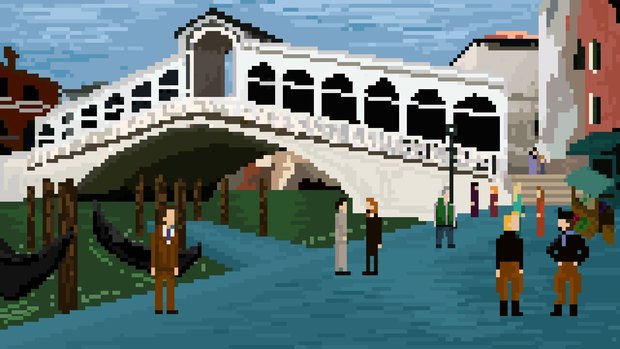
- 0 Comments
Pre-WWII Venetian mystery is light on gameplay, but there’s plenty to celebrate for fans of horror-tinged narrative pixel art mysteries
Ah, Venice… I’ve always wanted to visit this Queen of the Adriatic ever since Indiana Jones went there looking for his father. I almost succeeded once, but then had to cancel my trip at the last minute. The small travel diary I bought must still be lying around somewhere, but I’m not sure I’ll ever make it now. Its allure has diminished somewhat after reading more about a crowded city besieged by cruise ships, slowly sinking into the sea. Mass tourism has destroyed so much beauty in our world, and I realize I’m also a little part of that. But we’ll always have games like Carnival, by Beyond Booleans, which depict a realistic virtual setting and let us explore it. As was the case with the developer’s previous game, Abscission, it’s another dark point-and-click detective game with a supernatural edge that tells an unnervingly creepy, folkloristic story showing a darker side of human nature. It’s light on puzzles and took some time before the story really got hold of me, but by the end it genuinely succeeded in raising the hairs on the back of my neck.
It’s February 13, 1933. Mussolini rules over Italy, much to the dismay of many Venetians, who still view the city as its own republic, not a true part of Italy. And with plans for a new road-bridge connecting the island to the mainland, Venice is in an uproar. It certainly doesn’t help that Il Duce has banned the annual tradition of the Venetian carnival, which used to serve as an outlet for pent-up emotions.
Carnival is a typical point-and-click: investigate scenes, pick up interesting objects, and talk to other characters to follow up on leads. You play as James Maynard, not a detective but a British investigative journalist who grew up in Florence. James speaks fluent Italian, so he has been sent to Venice to write an article about the new bridge, chosen for his knowledge of the language. The dialogue is fully in English, but the text is bracketed whenever someone is supposed to be speaking Italian.
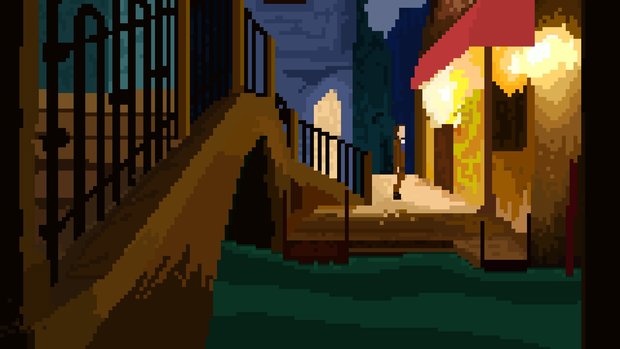
The newspaper arranged for a local contact, Arduino Notaro, to provide James with room and board. The paper also requested interviews with two important dignitaries: Don Vincenzo, the Saint Sebastian Church priest, and Signore De Sina, a Fascist dilettante. James also has an old friend he wants to catch up with again, Enzo Rossi, living somewhere in the city.
Complicating his assignment is the fact that James suffers from narcolepsy. In the middle of an action or even a conversation, the scene might change from day to night in a flash, with James suddenly waking up again without being aware he had lost consciousness. For some reason, this condition worsens while he’s staying in Venice. Strange visions – of the future? of the past? – flash before him (and us), and he occasionally hallucinates an imposing, black-cloaked figure wearing a white mask that seems to be stalking him, only to disappear again mere seconds later.
Experiences like these disrupt the otherwise harmless, conversational gameplay and instill a paranoid feeling throughout. Constantly I sat on edge, expecting something to happen. This tension is strengthened by the excellent original score by Bernardo Uzeda. The music often feels nervously performed, adding to the moody atmosphere. It sounded to me like an entire symphonic orchestra, with many rapidly strum stringed instruments as well as piano and deep, menacing bassoon tracks, and even some haunting choir voices at climactic moments, all complementing the game’s aesthetic in a Hitchcockian thriller style.
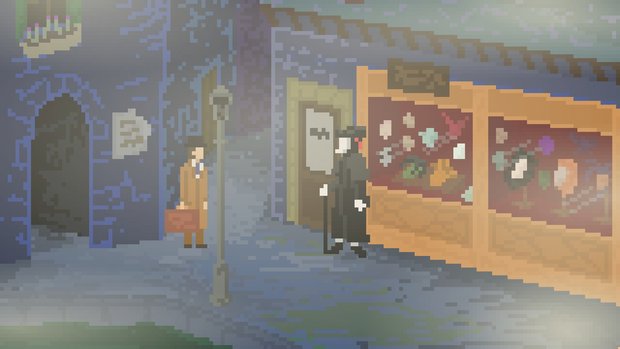
As James meets his host’s neighbors – widowed Robert and his little daughter Rosa, old German war vet Siegfried Weber, and a young woman named Isabella Croce who works a mysterious job in a mysterious building bearing a mysterious symbol – soon the story about the bridge is pushed to the background in favor of more worrisome matters. Suffice to say that certain people get on the bad side of some clandestine operations drenched in occult mystery – which could be real, or only imagined – and James takes it upon himself to help them out and unmask the truth. This will plunge you deep into – as the game itself describes it – the “ripples beneath the surface of Venice,” where you’ll begin uncovering the secrets surrounding the real meaning of the Venetian Carnival.
Carnival’s environments are quite detailed, though the low-resolution pixel art graphics are chunkier than Abscission’s. There’s no chance to ride the canals yourself, but I loved watching the sun rise over the lagoon, stars still twinkling as the color slowly seeped back into the basilica of Santa Maria della Salute and Saint Mark’s Tower, the water of the Grand Canal changing from black to emerald green. The game features some well-known locations like Piazza San Marco and Palazzo Grassi, while several small alleys capture the essence of the mazelike Venetian street grid.
The characters, on the other hand, appear very blocky and faceless, similar to the adventure game designs of the 1980s. It’s an artistic choice that doesn’t necessarily appeal to me, since I feel it’s harder to bond with such characters; even more so since they aren’t voiced. But the artist does succeed in bringing back the nostalgic charm of the early classics this way. In contrast, every important person you meet has a beautiful close-up portrait during conversations. Most of these are static but are sometimes animated, which more than makes up for the less-detailed character designs of the in-game models.
In the absence of voices, ambient sound effects are doubly important. While the generic footsteps kept getting on my nerves, all other sounds are very realistic, starting with the incoming train rumbling across its tracks, blowing its steam whistle. There’s also the occasional rustling of papers, shattering glass, and lapping water, while every dramatic event is enhanced by the loud, high-pitched addition of a musical instrument for light jump scare purposes, like when James suffers a sudden narcoleptic episode.
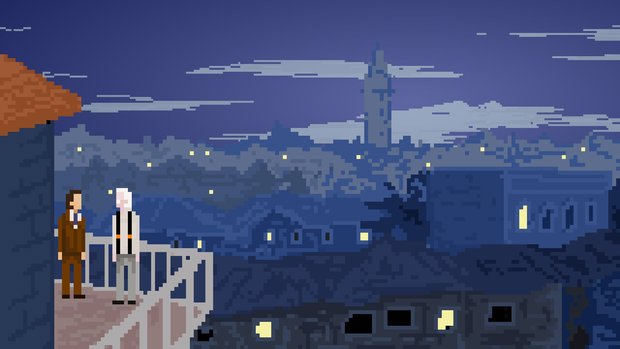
The protagonist carries a notebook in his inventory, and every day you can check his diary entry, as well as his new objectives. It’s a shame you can’t flip back to previous days to review his earlier entries, though. You don’t have to read these, but if you don’t read the notebook, you’ll miss out on part of James’s own thoughts and personality. He also carries a contact list, which he updates according to developments. You can look at the list and each day James will summarize what he knows about that person, adding info as he goes along.
Completing the objectives in your task list – interviewing or helping the people that are currently available to you – is very straightforward and rarely hampered by obstacles. At times you will have to make some repairs or find your way inside a building or past a guard, but the solutions are usually close at hand. Once all daily tasks are crossed off your list, a clock pops up on the map screen. You can then click on it to end the day, or you can revisit all locations to check for any optional conversations. These aren’t necessary to complete the game, but might provide some extra backstory. That clock remains on the map, however, even after you have exhausted all optional elements, which caused me to unnecessarily double check every location out of fear I might have missed something.
When it comes to the gameplay, I was a bit disappointed there weren’t many puzzles. The obstacles that are thrown in your way are easily dispatched, usually with an item acquired after a short fetch questing trade. Otherwise Carnival mainly has you talking to people. Thankfully the game’s finale has a couple more inventory puzzles, which you’d want when an investigation moves past talking and it becomes time to take action. Still nothing too tricky to solve, but at least a couple of extra steps to take before you can progress that had me running back and forth for a while.
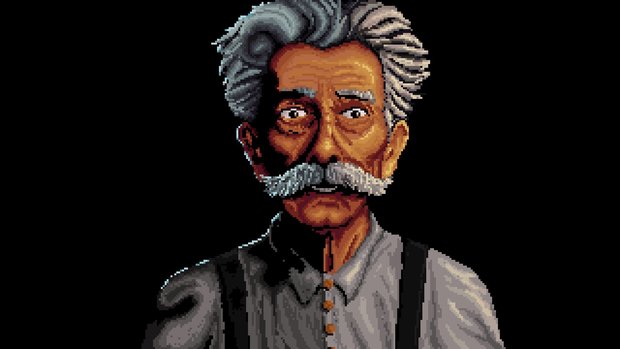
The lack of many item-based obstacles made it more annoying whenever I tried to investigate something at the top of the screen, only to have the hidden inventory keep dropping down. The inventory bar can’t be pinned, and the upper area of the screen is a little too cursor-sensitive for this, so it should have been moved up half an inch or so. There’s also a little pause each time you pick something up; first a picture of the item appears in the top right, followed by a comment by James that he has taken it. This just slows down the flow of the game for a couple of seconds, during which you can’t do anything, almost as if the screen has frozen momentarily.
With no auto-advance, you have to click through the dialogue text to progress. You can easily exhaust all dialogue options without worry, since I never felt punished for saying the wrong thing. A couple of times a conversation or a cutscene ends with a choice. I wasn’t expecting that, so I seldom had a recent saved game to redo these choices and see if they led to different outcomes. There’s an autosave function, but you can also record your progress manually whenever you want, except in the middle of a conversation. This would have been handy for replaying the decision-making scenes, since they do influence the game’s ending.
Storytelling definitely is Beyond Booleans’ strong suit. James narrates his Venetian adventure in the past tense, and the prose seems to come straight out of a mystery novel, filled with detailed descriptions flavoring the story. Perhaps the writer went a bit overboard on the historical facts; though surely very interesting if you’re into such things, they didn’t seem to provide much necessary information for the game itself. I appreciated the amount of research that went into creating Carnival, but I just went with the flow and didn’t try to separate fact from fiction.
While at first there isn’t much to do other than interview some folks and perform the occasional fetch quest, the game’s first decision-making opportunities caught me off guard. I froze, unsure what the best course of action would be. Other times throughout the game, James’s narcolepsy incidents became scary, more so when seemingly supernatural elements started to meddle with him as well. As you progress, the locals’ insatiable hunger for the Carnival starts to feel downright abnormal, and even James finds himself drawn in by an unknown force.
The game pulls out all the stops for its finale. Without giving away too much, I was appalled by the sights shown as I made my way beneath that rippling surface of Venice. Finally I understood why this was labeled a horror game, and I was appropriately chilled by what took place. I’m happy to say I made it all the way through, and my behavior throughout the game determined which supporting characters stood with me at the end. I was relieved by the outcome and satisfied with the result, even if some of my questions were left answered.
Final Verdict
Carnival is like a five-hour creepy gondola ride, guided along by an experienced storyteller at the helm. It’s very much narrative-focused and light on gameplay, but the amount of research put into it is astounding, and along with the detailed close-up character portraits and the brilliantly atmospheric soundtrack, it is easy to ignore its few hiccups and let yourself be swept along by an increasingly dark story. It all culminates in a horrific ending that definitely makes the voyage worthwhile, even with some loose ends left untied. A little more gameplay would have gone a long way, but the story is compelling enough that from now on I will always remember that someone who wears a mask might be hiding even more than just their face.
Hot take
With a little light puzzling and lots of dialogue, the retro-styled Carnival will give you goosebumps when the masks begin to come off of Venice’s seemingly charming, tradition-loving citizens.
Pros
- Creepy culturally folkloristic story
- Atmospheric pixel art environments
- Gorgeously detailed character close-ups
- Exciting soundtrack amplifies on-screen emotions
Cons
- Hidden inventory bar too sensitive to cursor movement
- Notebook doesn’t show previous entries
- Narrative-based gameplay doesn’t hold much puzzle challenge
Johnny played Carnival on PC using a review code provided by the game’s publisher.


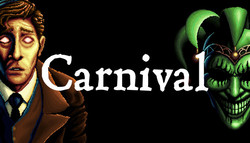








0 Comments
Want to join the discussion? Leave a comment as guest, sign in or register.
Leave a comment